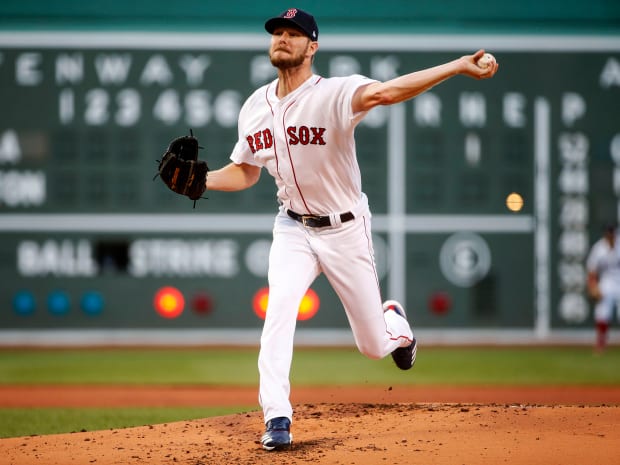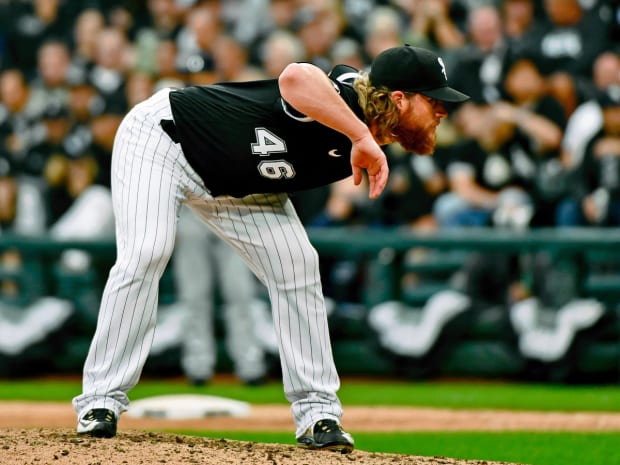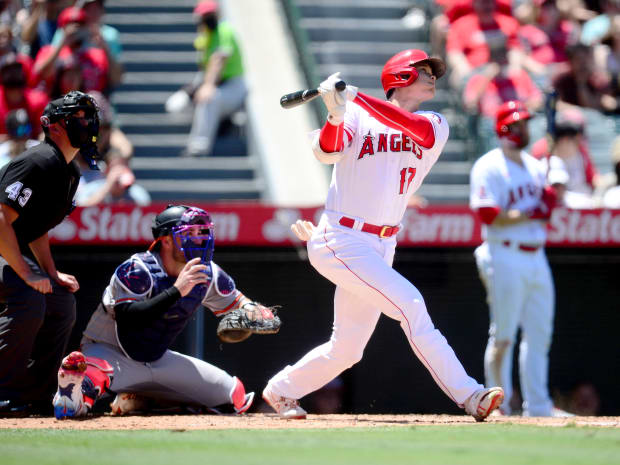Editor’s Note: This is the third and final story we’re rolling out on the active players with interesting Hall of Fame cases. We covered infielders on Friday and outfielders on Monday.
Pitching management has become far more complicated over the past five years. The rise of openers and firemen have led to parades of relievers trotting out from bullpens not only throughout the regular season, but during playoff games, tempered only slightly by the implementation of the three-batter rule. Starters are no longer expected to go seven strong; five will do just fine, thanks.
That massive shift in strategy will affect every pitcher’s statistics, which of course forms the bedrock of each Hall of Fame case. Relievers will take on greater importance with bullpens handling more innings, though the best ones may not always handle the ninth inning and accumulate a ton of saves, which has been the main factor in who’s been inducted to this point. Starters will have fewer of … well, everything: innings, wins, strikeouts, WAR, you name it. Everyone’s rate stats—K%, ERA, FIP—should improve, though. But will the voters recognize that enormous change and adjust their statistical standards accordingly? If not, many deserving pitchers could be unfairly kept out of Cooperstown.
The last wave of workhorses—as we know them, anyway—is set to wash out of the league over the next few years. But there are still plenty of powerful arms left in the league’s stable who deserve our recognition.

Greg M. Cooper/USA TODAY Sports
Starting pitcher: Chris Sale
To be clear: Max Scherzer, Clayton Kershaw, Justin Verlander and Zack Greinke will get in, and they shouldn’t have to wait past their first year of eligibility. As of now, they are the Mount Whiffmore of 21st century pitchers, occupying the top four of the WAR leaderboard among pitchers to debut in 1995 or later. They also all rank in the top 30 of S-JAWS—a metric developed by former Sports Illustrated writer and Hall of Fame expert Jay Jaffe—to measure the Cooperstown cases of starting pitchers while adjusting for the massive WAR totals of the dead-ball era. There are 66 starting pitchers in the Hall, and they clearly deserve to join that hallowed group.
It feels blasphemous to say this, but Jacob deGrom is not yet a lock by traditional Hall standards (even though he should be, in my eyes). While he’s been nothing short of spectacular during his eight years in the majors, not debuting until age 26 has left him little room for error when it comes to injuries. That being said, he’s one of 20 pitchers to have won multiple Cy Young awards. The only ones to fall off the writers’ ballot are Roger Clemens, Johan Santana, Tim Lincecum and Bret Saberhagen. His resumé looks very similar to Santana’s right now. If he can avoid the debilitating late-stage injuries that blighted Santana’s career, he should cruise into Cooperstown.
Sale could be in position to take the peak vs. longevity argument to new lengths. The lanky lefty owns a dominant seven-year peak, similar to Santana and deGrom, with one glaring difference: no individual hardware despite six top-five Cy Young finishes. It’s the sort of thing some voters could hold against him. On the other hand, he’s already logged over 2,000 strikeouts, accounted for the most WAR of any active pitcher without a spot on Mount Whiffmore, helped the Red Sox win a championship and currently holds the all-time record for walk-strikeout ratio (5.33). The strong comeback from Tommy John surgery last year brightened his outlook, but the soon-to-be 33-year-old isn’t out of the woods yet. His all-time S-JAWS ranking of 102nd symbolizes a need to prove durable and keep injured list stints to a minimum to avoid the fate of the countless hurlers whose arm ailments prevented them from earning a plaque.
HOF picks: Scherzer, Kershaw, Verlander, Greinke, deGrom, Sale
He’s got potential: Gerrit Cole, Corey Kluber, Stephen Strasburg, Madison Bumgarner, Walker Buehler

Matt Marton/USA Today Sports
Relief pitcher: Craig Kimbrel
Kimbrel, Kenley Jansen and Aroldis Chapman possess remarkably similar professional biographies. All debuted in 2010. All are entering their age-34 seasons. All have won World Series titles, but none of them closed out the clincher. Jansen is the most comparable pitcher to both Kimbrel and Chapman, according to Baseball Reference’s similarity score. Kimbrel is Jansen’s closest match. But they’ve arrived at this three-way intersection from very different routes.
Kimbrel started out the strongest, taking control of Atlanta’s closer job in his second season and proceeding to lead the NL in saves while earning All-Star selections for four consecutive years. His future is also the most uncertain of the trio, after he followed two awful seasons with the Cubs with a Jekyll-and-Hyde campaign split between Chicago’s two teams. Playing the setup man to closer Liam Hendriks on the South Side didn’t seem to suit him, and it didn't help his HOF case, either.
Jansen assumed the closer’s role in Los Angeles in his third season and steadily harnessed his control until his peak 2017 season, when he led the NL in saves for the only time in his career while posting an astronomical 15.6 K/BB rate—the fifth-best mark for a reliever (min. 50 IP) in MLB history. He, too, has had his shaky moments in recent years, blowing his only save opportunity in the 2020 World Series. The addition of a curveball to his arsenal in 2021 seemed to reinvigorate him, but his walk rate is once again a concern after registering a career-low 2.4 K/BB rate in 2021. He’d also need to double his three career All-Star selections to match the lowest output of the eight relievers already enshrined.
Chapman’s cannon of a left arm granted him a unique mystique before he even debuted in the majors, but he’s actually never led the league in saves—or any other standard category, for that matter, with no black ink in sight on his Baseball Reference profile. His most memorable appearance came in a blown save, when he served up a game-tying home run to light-hitting outfielder Rajai Davis with the Cubs’ World Series drought on the line. He also had a high-profile domestic violence incident, for which he was suspended 30 games in 2016. But his body of work is right up there with his two contemporaries, and the three of them dominate the all-time relief pitcher leaderboards (min. 500 IP), including the top three strikeout rates in baseball history:
As relievers become more important in today’s game, the Hall should open up its doors to more of the sport’s firemen. I suspect that by the time these three call it quits, they’ll all have good yet hardly bulletproof arguments and will stay on the ballot for a few years. Kimbrel is just 50 saves away from tying Billy Wagner, the patron saint of borderline Hall of Famers for relief pitchers, for sixth on the all-time leaderboard. His ascension there isn’t quite assured, but even if he does crash out before then, he’s already done enough to spark a healthy debate based on his historically good swing-and-miss stuff.
HOF picks: Kimbrel, Jansen, Chapman
He’s got potential: Josh Hader

Gary A. Vasquez/USA TODAY Sports
DH: Shohei Ohtani
Ohtani’s future is so difficult to project. How much longer will the 27-year-old play both ways? Would he choose to concentrate on hitting or pitching if he ever gave up half of his game? And how will we evaluate the first true two-way player of the modern era if he can’t replicate his historic 2021 campaign for much longer? Given he’s only been able to pull double duty for a full season once out of four tries, we can’t assume it’ll happen again. Will voters place an outsized value on his statistics due to the degree of difficulty, or will those who emphasize longevity penalize him if he can’t stay on the field enough to accrue some magical career numbers? The discourse surrounding Ohtani’s worthiness will be enthralling, fierce and unprecedented.
Giancarlo Stanton has only played 235 of his 1,324 career games as a designated hitter, but he should be slotted there for the vast majority of his six remaining seasons in the Bronx. Stanton was actually a plus defender as recently as 2018, but the two following injury-plagued seasons robbed him of his value on that end. It also significantly slowed the slugger’s home run pace; he’d amassed 305 home runs by the end of his age-28 season, but has added just 42 in three seasons since. Some people forget just how close Stanton was to tying Roger Maris’s untainted single-season home run record when he launched 59 to win the NL MVP during his last year in Miami. Regardless, Stanton’s case feels rather straightforward. If he gets to 500 home runs, he’d be somewhat like the clean version of Mark McGwire of his era—a feared slugger with elite raw power who’d be a worthy choice for the Hall. If he falls short of that milestone, voters would have to weigh how much his explosive twenties offset what would be an uninspiring conclusion to his career.
HOF picks: Ohtani, Stanton




!["[T]he First and Fifth Amendments Require ICE to Provide Information About the Whereabouts of a Detained Person"](https://images.inkl.com/s3/publisher/cover/212/reason-cover.png?w=600)


